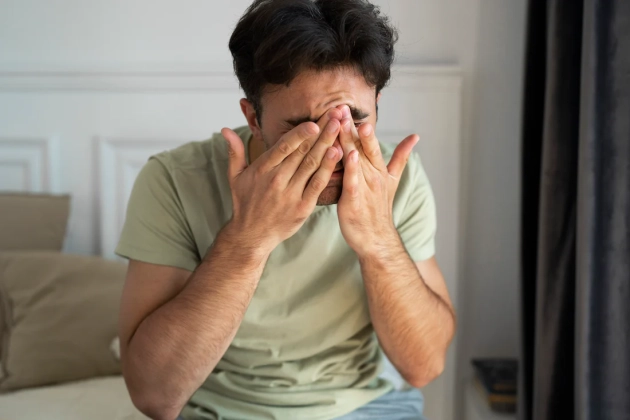Indoor air can be two to five times—and sometimes over a hundred times—more polluted than outdoor air, worsening allergies, asthma, and general health. These seven straightforward actions will help you improve your home’s air quality and keep your family breathing comfortably.
1. Upgrade to a High-Efficiency Air Filter
Standard fiberglass filters catch large dust but let fine particles slip through. Swap to a MERV 13 or True HEPA filter to trap pollen, pet dander, and even some bacteria.
Tip: Change filters every 1–3 months—or sooner if you have pets or allergy sufferers at home. For professional filter recommendations and installation, check out our Air Cleaners & Purifiers solutions.
2. Control Humidity Levels
Excess moisture fuels mold and dust mites. Aim to keep indoor relative humidity between 30–50%.
Tip: Use a whole-home dehumidifier in damp climates or a humidifier during dry months. Learn more about our Humidifier & Dehumidifier offerings.
3. Ventilate While Cooking and Cleaning
Gas stoves emit nitrogen dioxide and particulates; cleaning sprays release volatile organic compounds (VOCs).
Tip: Run a vented range hood when cooking and open windows during heavy cleaning. For kitchen ventilation upgrades, explore our A/C Repairs & Maintenance services.
4. Schedule Annual HVAC Tune-Ups
Dirty coils, clogged filters, and worn components degrade airflow and spread contaminants.
Tip: Book a pre-season inspection to clean coils, check duct sealing, and verify safe combustion. See why Why Regular HVAC Inspections Are Critical for Los Angeles Home Safety.
5. Install Carbon Monoxide & VOC Detectors
Smoke alarms won’t catch colorless, odorless gases. Place CO detectors on every level—especially near bedrooms—and consider VOC monitors in areas with new paint, flooring, or furniture.
Tip: Test detectors twice a year and replace batteries during daylight-saving clock changes.
6. Eliminate or Seal VOC Sources
VOCs off-gas from paints, adhesives, and synthetic materials long after installation.
Tip: Choose low-VOC paints and natural materials, then seal any remaining sources with proper coatings. For duct and attic sealing to prevent off-gassed chemicals from entering living spaces, see our Duct Sealing & Insulation options.
7. Keep Your Home Clean and Pet-Friendly
Dust mites, pet dander, and pollen accumulate in carpets and upholstery.
Tip: Vacuum weekly with a HEPA-equipped cleaner, wash bedding in hot water, and groom pets regularly. To assess your system’s overall IAQ, schedule a Virtual Diagnostic with our experts.
Helpful Resources
- EPA: Indoor Pollutants & Sources
In-depth look at common indoor contaminants. Learn More - CDC: Environmental Controls for Allergies & Asthma
Guidelines to reduce triggers at home. Learn More - ACCA: Duct Design & Sealing Standards
Professional best practices for airflow and IAQ. Learn More
Ready to take control of your home’s air? Contact Around the Clock Heating and Air Conditioning for a comprehensive IAQ assessment and customized solutions.
➡️ Get Your Free IAQ Consultation!
Frequently Asked Questions About Indoor Air Quality
1. What is considered good indoor air quality (IAQ)?
Good IAQ means pollutants like dust, VOCs, mold spores, and combustion byproducts remain below health-risk thresholds—typically less than 10 µg/m³ for PM2.5 and minimal VOC levels.
2. How often should I change my HVAC filter?
For most homes, replace or clean your filter every 1–3 months. Homes with pets or allergy sufferers may need to swap filters monthly.
3. Can indoor plants really improve air quality?
Some plants (e.g., snake plant, aloe vera, English ivy) can absorb certain VOCs, but they’re no substitute for mechanical filtration—use both for best results.
4. Does cooking with gas affect my IAQ?
Yes—gas stoves emit nitrogen dioxide, carbon monoxide, and particulates. Always use a vented range hood or open windows during cooking.
5. How do I know if I have a mold problem?
Musty odors, visible mold patches, or unexplained allergy symptoms in specific rooms signal mold growth. Check high-humidity areas and plant soil.
6. Are air purifiers worth the investment?
High-efficiency air cleaners with HEPA and activated-carbon stages can remove up to 99.97% of particles and many VOCs—especially valuable for allergy sufferers and sensitive households.
7. What humidity level is best for IAQ?
Maintain indoor relative humidity between 30% and 50% to inhibit mold and dust mites without causing dryness.
8. How often should I have my ducts professionally cleaned?
Every 3–5 years if you see mold, rodent droppings, or heavy dust buildup—or sooner if allergy symptoms persist despite other measures.
9. Can cleaning products harm my IAQ?
Yes—many cleaners and air fresheners emit VOCs. Switch to green-certified, fragrance-free products and ventilate while using them.
10. When should I call an HVAC professional for IAQ issues?
If DIY steps (filter changes, ventilation, humidity control) don’t help, or you detect persistent odors, uneven airflow, or system noises, schedule an expert IAQ assessment and tune-up.

